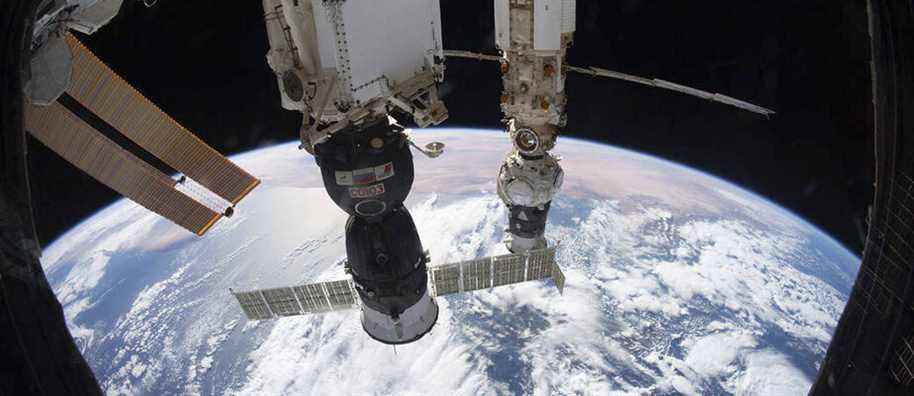Posted at 5:00 a.m.
Powering the International Space Station
In early March, the CEO of Roscosmos, the Russian space agency, recalled on Telegram that a Russian module restores the altitude of the International Space Station on average 11 times a year. “She could fall into the ocean or on land,” threatened Dmitry Rogozin on the Russian social network. NASA immediately announced that it was considering other solutions than the Russian Progress capsules to propel the Space Station. “I doubt that the US government will jeopardize cooperation with Russia for the Space Station,” said John Logsdon, a political scientist specializing in space at Georgetown University in Washington. “But I believe this will be the last milestone of this cooperation which has lasted for more than 30 years. Political scientist Eytan Tepper, specialist in space governance at Laval University, notes for his part that the current crew of the Space Station (four Americans, two Russians and a German) has so far avoided having the war affect his work.
Guyana’s Soyuz

PHOTO JODY AMIET, AGENCE FRANCE-PRESSE ARCHIVES
Launch of a Soyuz rocket from the Kourou base, in French Guiana, in December 2019
Roscosmos has outright canceled future Soyuz cargo launches from French Guiana. The European Space Agency (ESA) uses the Russian capsule because it has an intermediate capacity between the two Ariane launchers available. Since 2011, around twenty Soyuz launches have been made from French Guiana, and the launch of two Galileo navigation satellites was scheduled for early April.
UK satellite internet

PHOTO PROVIDED BY ROSCOSMOS, REUTERS ARCHIVES
Soyuz rocket carrying OneWeb satellites which was to take off from Kazakhstan on March 4
Roscosmos has suspended a launch scheduled for early March of 36 satellites from the OneWeb constellation, a satellite internet service. The Russian authorities demanded that the British government, a 17% shareholder in OneWeb, sell its stake. OneWeb currently has more than 300 satellites and aimed to complete its network of 650 satellites by the end of the year, with six more launches from Baikonur. Only one OneWeb launch has taken place elsewhere so far, in French Guiana, and it was a Soyuz capsule.
Russian rocket engines

PHOTO FROM DAVID SAINT-JACQUES’ TWITTER ACCOUNT
A Cygnus capsule docked to the International Space Station by Canadarm2 in 2019
Two American companies, United Launch Alliance (ULA) and Northrop Grumman, use Russian RD rocket engines. Roscosmos has decided not to honor its contracts with these two firms, which could complicate the sending of Cygnus cargo capsules to the Space Station on Northrop Grumman rockets. ULA still has 12 spare RD engines and is about to receive a new engine developed in the United States. The RD engines were banned from import between 2014 and 2016 in the United States, and then authorized, despite opposition from SpaceX. Ironically, a Cygnus capsule is currently docked with the Space Station to test the possibility that it could be used to restore altitude, replacing the Progresses.
The Martian Mission

IMAGE FROM THE EUROPEAN SPACE AGENCY WEBSITE
the rover Rosalind Franklin
Next fall, the Russian lander Kazachok was to leave for Mars, with on board the European rover Rosalind Franklin. At the end of February, the ESA announced that the mission would “probably not” leave in 2022, even though Roscosmos had publicly wanted it to “continue” as planned. “I think the mission will continue, there have been too many investments,” says Yves Gingras, science historian at the University of Quebec in Montreal. “International scientific cooperation is too important to be permanently affected by what is happening in Ukraine. The mission was originally intended to be American-European, but NASA withdrew in 2012, forcing ESA to turn to Roscosmos. Interestingly, Kazachok means “little Cossack” (the Cossack culture originated in southern Ukraine) and is the name of a Russian dance. the rover Rosalind Franklinnamed after a British biologist who was involved in discovering the structure of DNA, also features Russian instruments.
Ukrainian space industry

PHOTO STEVE HELBER, ASSOCIATED PRESS
Antares rocket taking off from the base of Wallops Island, Virginia, on February 19
The West also makes heavy use of Ukrainian space factories, which employ 16,000 people and build 100 rockets a year, as well as stages for some Western rockets, including the American Antares, according to Space.com. In an interview with the specialized site, at the beginning of March, a former head of the Ukrainian Space Agency, Volodymyr Usov, indicated that the factories are near the Dnieper river, or at the heart of the fighting.
Learn more
-
- 3
- Number of Russian cosmonauts due to arrive on March 18 in the American Space Station
SOURCE: NASA

